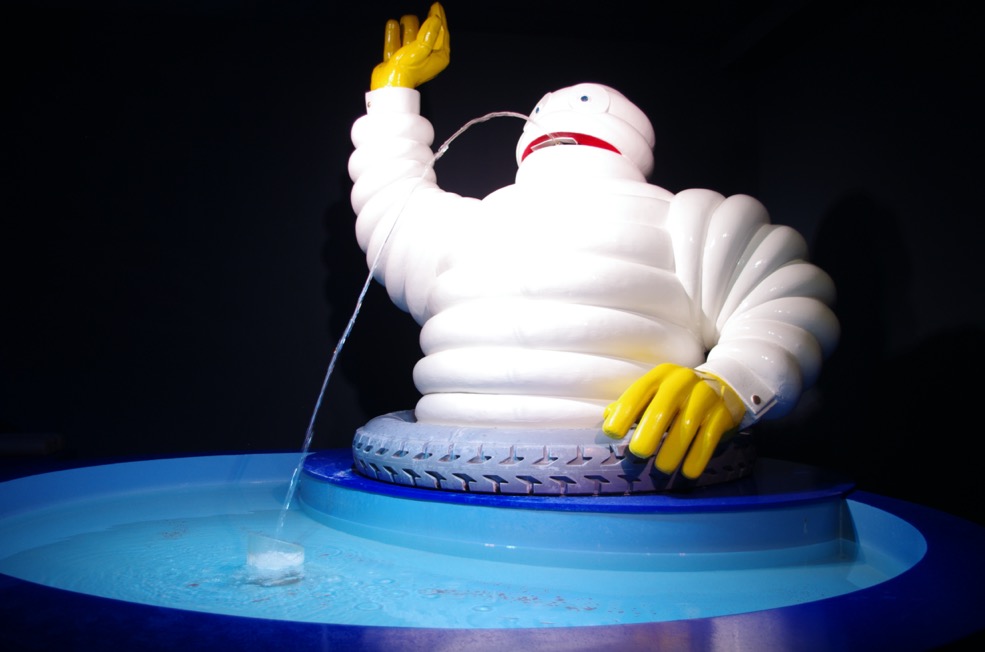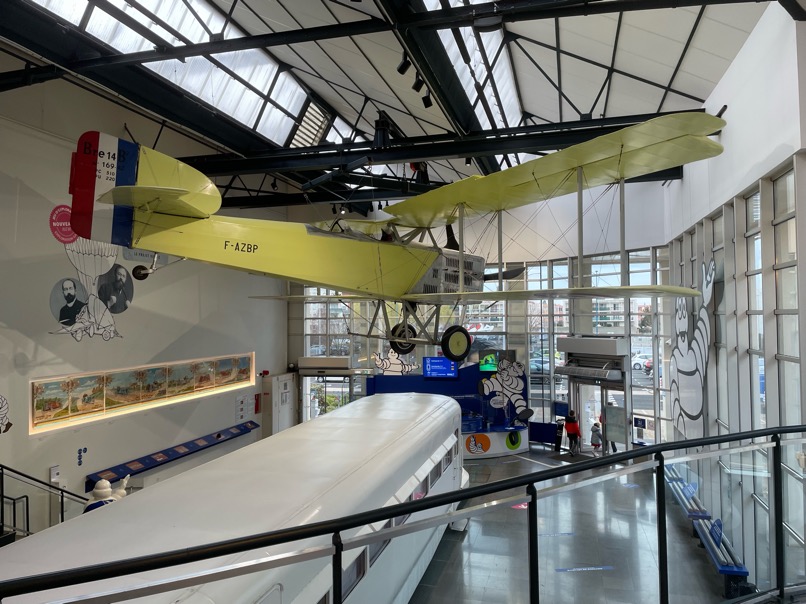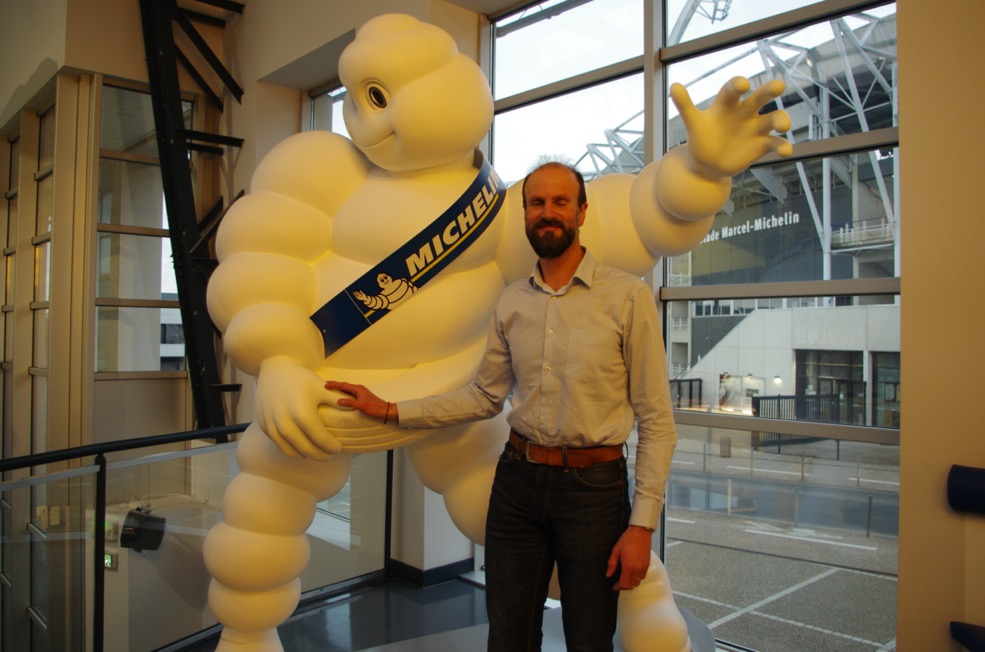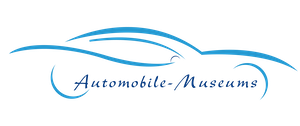

The history of Michelin
Known worldwide for its tires and guides, Michelin has set up the Michelin Adventure in Clermont-Ferrand, the city of its headquarters, its museum intended to better know its history and its universe. L’Aventure Michelin is spread over 2000 m², in a museography that is both historical and thematic.
The spaces follow one another in a clear path, presenting many objects and many very clear explanations, even for the neophyte. L’Aventure Michelin is in the heart of a “Michelin” district with the historic factory of Cataroux and opposite the museum, the Marcel Michelin Rugby stadium of the ASM.
If the Michelin brothers did not invent the tire, they contributed a lot to its development, both technical and commercial. Improving the original product, innovating and filing numerous patents, they immediately became interested in its uses, having understood that it was necessary to create the interest and the need to quickly develop the use of the tire, what would today be called a marketing strategy. The idea may seem simple, but it was necessary to formulate it and especially to apply it: the tyre must become an indispensable element of mobility in all its forms, so the more there are trips, the more tires will be sold!
My Favorites
The heritage of L’Aventure Michelin is very rich, both in vehicles, objects related to mobility and visual or sound documents. Some favorites to distinguish:
- The Mille pattes, 9 tons, 2 V8 engines, 10+1 wheels, to test truck tires at high speed
- The itinerary office, for the contrast with GPS and the internet of today
- The “motor-wheel”, another very spectacular machine


Interview with Stephane Nicolas
Head of the historical heritage of the Michelin Group What is the genesis of L'Aventure Michelin? L'Aventure Michelin opened in 2009, with the aim of highlighting Michelin's historical heritage and thus promoting the brand, sharing with the general public the adventure of the Michelin brothers and the history of the company, but also talking about the future. Michelin does not build cars, but several are exhibited in the museum... Yes, indeed. The vehicles on display are varied, they represent different worlds in which Michelin has brought or continues to bring innovation. Many are in a way the witnesses of this progress, they allow to tell and illustrate the story. What does the heritage of L'Aventure Michelin represent? We exhibit about a thousand pieces, which represents less than 10% of the heritage! Michelin is a large industrial company, with a very strong tradition of engineering, creation and innovation in many areas generally related to mobility. The company is more than a hundred years old (created in 1889), and has always had its headquarters in Clermont-Ferrand, which also partly explains the richness of this heritage. Today, l'Aventure Michelin occupies about 2000 m², and there is a reflection to extend the exhibition and be able to present more pieces. Especially since the team continues to collect objects all over the world, and of course Michelin continues to innovate. A few words about museography? Michelin is known for some products such as tires or guides... So we try to present other facets of the company, to show all the creativity behind the objects. The idea is always to place Michelin innovations in the historical and societal context. Visitors often come with their families, and spend between 1h30 and 2h in the various scenographic spaces, and everyone must find their interest. We receive more than 100,000 visitors per year, which confirms the success of the approach with the public, and its attraction for an industrial history that crosses everyday life. Other projects? Yes. For example, we have a very large archive (documents, films, advertising posters, etc.), which is currently being digitized. This will make it more easily accessible to researchers, and will open up new avenues of exposure.

The beginning of the adventure
In front of the entrance, a huge tire for mine haul trucks recalls a key Michelin activity, probably less known to the general public. With more than 4m in diameter, a weight of more than 5 tons, this tire for trucks of 600 tons (!!!) can actually be described as an extreme tyre. Upon entering, the reception offers another rather spectacular view with a Micheline (a railcar on tires), a Breguet-14 biplane plane of the 1st World War suspended, and a single-seater Formula E (Grand Prix Competition in full electric). The visitor is thus immediately immersed in the diversity of Michelin’s activities, decidedly not only passenger car tires…
We enter the exhibition through the historical part, which allows to unfold the chronology of the creation of the company, its first creations and immediately the demonstration by the uses that will make it successful. First by bike, the first room is devoted to the Paris-Brest-Paris race of 1891, bike and tire, photos and comments of time to illustrate a race of 1200 km without planned stage, if not the minimum of feeding the riders! The winner was the only rider equipped with the new removable tyre patented by Michelin.



A few years later, in 1895, it was the still fledgling automobile that was targeted. Same approach as the cycling race, but this time the Michelin brothers build a car to participate themselves in the Paris-Bordeaux-Paris race and demonstrate the interest of the tire. Peugeot chassis and Daimler engine, Michelin tires, this unique car tends to move in zig-zag, hence its nickname of the Lightning! Contract fulfilled, despite many problems and incidents, the car finished the race within the allotted time. The car featured here is a replica of the original Lightning.




A few more steps, and De Dion’s tricycle symbolizes the 3rd milestone of the beginning of this adventure. Car manufacturers were reluctant to equip their models with tires, so Michelin bought 100 De Dion tricycles and 200 Bollée voiturettes, a full semester of production, and sold them directly equipped with pneumatics. Quick success, the demonstration is made and the automobile adopts the tire! Michelin continues to be involved in car and motorcycle racing in several forms, a vector of innovation and demonstration, illustrated by numerous photos, documents and panels.
In passing, several types of wheels and tires are exposed, showing research and experiments to improve comfort and robustness in these times when tar was rare and potholes numerous.
Industrial development
A little further, a Citroën Type A from 1919 presents another advance. It is the 1st car built in “large” volume in Europe, and among other novelties, it is equipped as standard with wheels with tires, and even a spare wheel!
In the room dedicated to the radial tyre, one of Michelin’s major inventions, sits a Citroën Traction. Car apparently banal but unique because its rear axle had been modified to test these new tires. It is also symbolic because Michelin was the first and for a long time the only tyre manufacturer to carry out dynamic tests. This real revolution allowed the company to develop significantly to become a world leader, and the museum presents the principles, advantages and evolutions all around the room.




Another space presents the Mille-pattes, probably the most spectacular vehicle of L’Aventure Michelin. The car looks like a Citroën DS station wagon that would be bodybuilt. Built in 1972, the Mille pattes weighs 9 tons, has 10 wheels and 2 V8 engines of 200 horsepower each. An 11th wheel, located in the center of the vehicle, is used to test tires for trucks and coaches at very high speed (about 160 km/h), at a time when it was thought that speeds would continue to increase steadily. The Mille pattes was used for several years on Michelin’s test tracks, the machine being obviously not homologated for road driving. If it is orange, it is also to be better seen when it was circulating on the test tracks.




Plane and train
L’Aventure Michelin also presents other areas of activity of the company, less known than automotive tires. A room presents the first developments in the field of aviation, Michelin having very early perceived the interest of aircraft in military use. Before the First World War, Michelin participated in the development of the first aircrafts, notably through competitions and scholarships rewarding the progress made.
For example, a sum of 100,000 Francs was promised to the first aircraft manufacturer capable of linking Paris to the summit of the Puy de Dôme (mountain near Clermont-Ferrand), a feat achieved in 1911. The objective was to convince the military staffs of the interest of this new equipment for future conflicts. Successive tests and developments eventually led to the Breguet XIV , of which Michelin built almost 1600 units during the conflict. It is also near Clermont-Ferrand that the first cemented runway in the world will be built, allowing aircraft to take off in all weathers.
While the company has not continued in the development of aircrafts, aircraft tires remain a significant activity of the company. In 1929 Michelin tackled a new field with the railway. Having noticed the discomfort of conventional trains, Michelin decided to adapt the tyre to the train, and developed for this purpose a railcar, the famous Micheline. In addition to the additional comfort provided by the use of tyres, Michelines are also faster, brake better and wear less than conventional trains. The first prototype will be built from a Renault 40 horsepower with an extended chassis. Several prototypes were built in the early 1930s, and a demonstration trip took place in 1931 between Paris and Deauville.



In 1936, the Michelines ran on several railway sections in France, carrying a hundred passengers at a cruising speed of 120 km/h. If the Micheline is presented in several European countries and the United States, even obtaining circulation authorizations in several countries, it will be mainly deployed in France and in some French colonies, in Africa and Asia. The Micheline remained in service in France until 1952, and even a little later outside the metropolis. A model of one of the first prototypes and large wall panels detail the genesis and history of this vehicle.
Competition and motorcycles
Competition, an area in which Michelin has always been very active, is of course present at L’Aventure Michelin. This participation is represented here by a Formula-E, a single-seater formula for electric Grands Prix in which Michelin is very involved. Several panels explain to visitors the interest for Michelin to participate in motor racing.





We leave the automobile for the motorcycle, another area in which Michelin is also very invested. Several motorcycles are presented at the Michelin Adventure, such as this 1977 motorcycle equipped with a 950 cc engine “inflated” to test in real operating conditions the radial tires dedicated to the motorcycle. 2 other bikes have other test conditions, with this bike developed specifically for endurance racing to test tyres in extreme conditions and over long distances. Last motorcycle presented, a machine developed for electric motorcycle GP races, to test tires subject to particular constraints, including the very important and instantaneous torque.
Tourism activity
In addition to the vehicles presented at the Michelin Adventure and mainly related to the manufacture of tires, an important section of the museum is devoted to tourism in these different forms, another area in which Michelin has acquired a worldwide reputation through these tourist and gastronomic guides. The signage, bollards and signposts, of which Michelin was one of the main promoters, is not forgotten, the objective here is always to make life easier for the motorist, and therefore to develop the use and eventually the need for tires.
A giant Michelin map also recalls the activity of producing maps, complementary to tourist guides, even if at the time of GPS the youngest probably do not know the use, and even maybe the existence of paper maps. A Citroën 2 CV crosses this giant map, a reminder that Michelin, then owner of Citroën, is at the origin of the specifications that will lead to the development and manufacture of this particularly popular vehicle.
Do not miss the small room, in which a video and a telephone exchange recall the itinerary consultation service that Michelin had set up to facilitate the movement of motorists. Again in our age of ubiquitous internet, we are surprised by this very personalized service.



Another part of l’Aventure Michelin highlights the marketing activities. While product promotion is largely carried out through “live” demonstrations and competitions, the activity related to more traditional marketing and driven objects has always been very active, and several showcases and photos present numerous objects that will certainly bring back memories for many visitors. The famous Michelin Man, the silhouette associated with the brand, is obviously in the spotlight.
Conclusion
You’ll also discover other amazing things, like the “motorbike-wheel” that accompanied the 1997 Tour de France cyclists. The variety of subjects covered, the quality of the museography and the iconographic bias make a visit to the Michelin Adventure a family activity that is both fun and instructive, even for connoisseurs.
The photos on this page belong to Automobile-Museums, no use or reproduction is allowed without the prior written consent of the owner.
